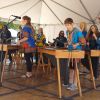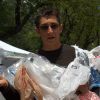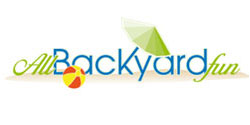News
News from Boulder, Colorado and Boulder Channel 1 News editors To advertise please call 303-447-8531
CU’s AD Mike Bohn mysteriously quits or is fired
May 28th
University of Colorado Boulder Chancellor Philip P. DiStefano today announced he has accepted the resignation of CU-Boulder Athletic Director Mike Bohn, effective June 3.
“Mike Bohn led CU-Boulder athletics in a time of great transition and change,” said DiStefano. “We are grateful to him for his vision, passion and commitment, and for his key role in revitalizing men’s and women’s basketball, helping us to join the Pac-12 Conference, and in taking important steps to upgrade athletic facilities at CU-Boulder. We wish him well.”
DiStefano said he will in the coming days appoint a search committee to conduct a national search for Bohn’s successor.
DiStefano said the university will be seeking “a dynamic leader” as athletic director – someone who, he said, “can focus on our key goals of fundraising, building a dynamic organization, and creating long-term sustainability in the athletics mission.”
The university in February announced a $50 million facilities fundraising campaign as the anchor of a $170 million multiphase, multiyear upgrade of CU athletics facilities at Folsom Field and the Dal Ward Center, and the development of an indoor practice facility.
“We are seeking a talented leader who can build on Mike’s vision and make it a reality,” said DiStefano.
Bohn was named the university’s sixth athletic director on April 13, 2005, five months after CU Athletic Director Dick Tharp stepped down.
[includeme src=”http://c1n.tv/boulder/media/bouldersponsors.html” frameborder=”0″ width=”670″ height=”300″]

Quickbooks Connect Boulder, May 21st 2015
May 26th
Quickbooks Connect Local comes to Boulder and Boulder Channel 1 visits this exciting event to talk with some of the big stars of the show including Bill Rancic an American Entrepreneur who won the first season of the Apprentice, Al Ko the Vice President of Product Management at Intuit and Heather McLellan the Vice President at Intuit. The show was to help connect local entrepreneurs and start-ups in Boulder, as well as introduce some new features and apps that help make quickbooks even better. We also feature the special presentation of Cash Mobs where Bill Rancic visits local businesses and buys out a large amount of their inventory to help support local and startup businesses.

Boulder Creek Festival
May 24th
Boulder Creek Event Productions include the Boulder Creek Festival, Boulder Hometown Festival and other great entertaining events.
Website: http://www.bceproductions.com/

Watch Boulder Channel 1 at the Boulder Creek Fest this year, we have 3 separate broadcasts that take place at various times and locations throughout this Memorial Day weekend event, some live, some recorded and lots of things to watch from this and previous years that we have been to this always fun, annual event in Boulder. Sit Back and enjoy the show, and if your up to it, stop by the Boulder Channel 1 booth in media row.
Justin TV
Watch live video from boulderchannel1 on www.justin.tv
UStream


































